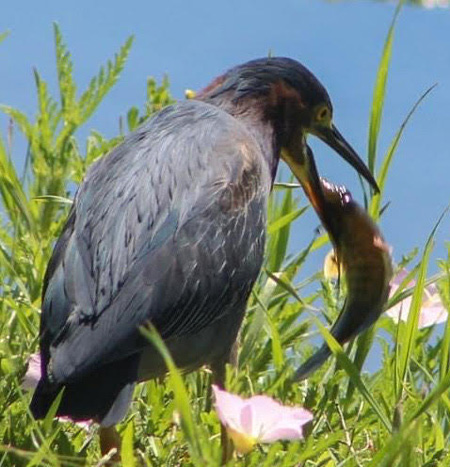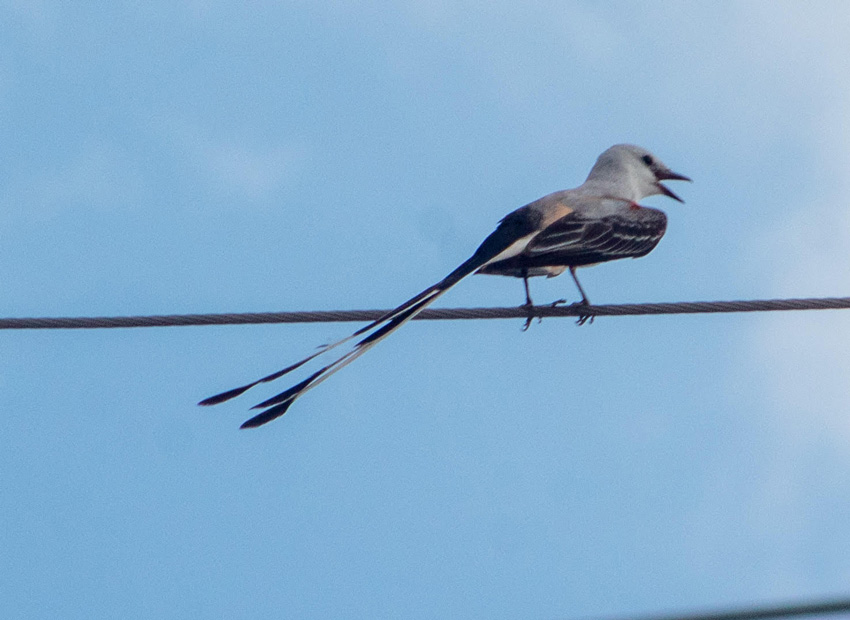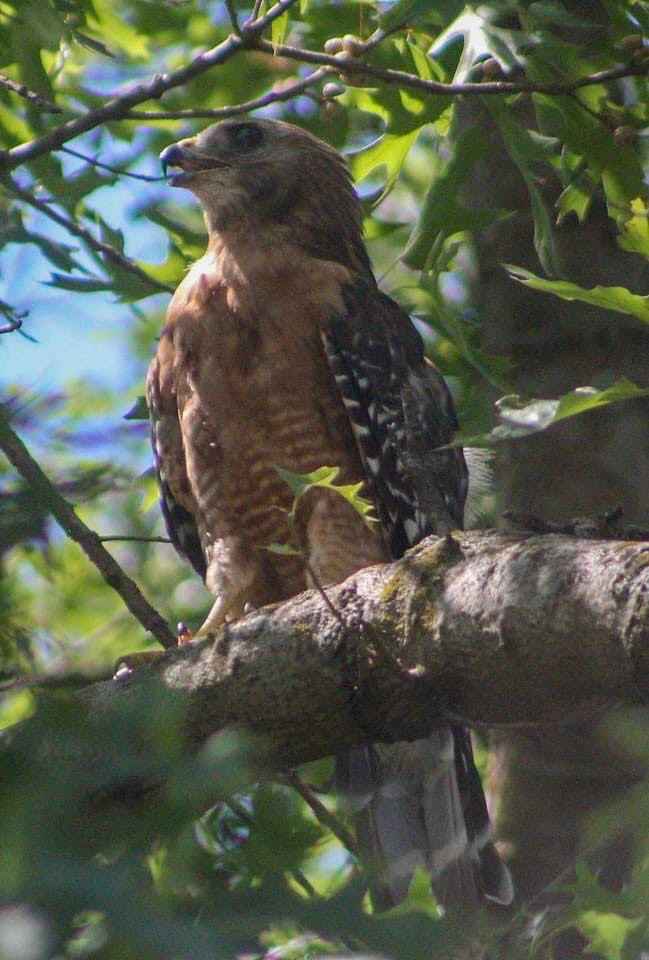To a Kroger parking lot that lay sun-scorched like a griddle over flame, I had brought my camera with me, because that whole week I saw a scissor-tailed flycatcher perched on a nearby powerline. As predicted, the bird was there. Unrolling my window, I took a few discrete photos. Despite my caution, the scissortail noticed me and flew into a broiling summer sky, trailing the black chopsticks of their tail. My picture, not my best due to poor focus, showed tail feathers at least twice as long as the body, salmon pinks where wings meet the breast, a snowy head, and eyes like black drops of oil.
With a warm latitude and cross-timber prairies mixed with thickets, Fort Worth is rich in biodiversity. Birds are no exception — 375 avian species are confirmed by iNaturalist, an online citizen science project to which users upload pictures of plants, fungi, and wildlife. Observations are confirmed, denied, and curated by biological experts. The website has exploded since its humble inception in 2008, with 3.2 million users reported globally in January 2023. The site verified sightings of scissor-tailed flycatchers in Tarrant County as early as March and as late as November. Every spring, they come from steaming ferns as far south as Panama, breeding in open prairies north to Nebraska. Members of the kingbird genus Tyrannus, they’re also called the Texas “bird of paradise” for their lush tail plumage, reaching up to 9 inches.
I’ve photographed many of Fort Worth’s waterfowl, including great blue and little blue herons, lesser scaups, hooded mergansers, and wood ducks. However, most of these waterbirds are yearlong residents, though the yellow-crowned night heron breeds here in the warmer months and flies back to the tropics in winter. Last year at a local pond, I startled one such night heron, who splashed from the water to a tree in safety from my human interloping. I don’t observe birds before they observe me first. Usually, it’s because they permit me to photograph their lives voyeuristically. As in most of my pictures, my observations happen through serendipity, being in the right place and right time, by an animal’s permission, through invocation or prayer. Sunlight glimmered on the fierce cherry eye. Blonde threads spooled from the back of an oblong head with a mattocking beak, the wings China-blue.
Avian summer residents in North Texas usually arrive during spring and depart in fall. Among migrating birds, seasonal changes, such as temperature or the availability of insects, waken a latitudinal wanderlust. The National Audubon Society says migrating birds navigate using Earth’s magnetic field and the patterns of the stars. A common human hubris assumes that only our species can notice heavenly bodies, sentinels of eternity that connect us to the divine, yet Darwin states in The Descent of Man that people differ from animals in degree and not kind. Earth is a biosphere where life depends on life, not a linear hierarchy based on intelligence, even though it is clear that birds are smart.
One soft summer morning, I heard a Carolina wren singing teakettle, teakettle, teakettle, perched on a bald cypress twig, chirping signs for territory, sexual desire, or warnings, alien to humanity yet an unmistakable language of Earth. In America, humans spend hours staring at screens for social media, which claims to give connection but isolates us to a projection of life, distant from life itself. Sometimes people wonder if humanity is the lone intelligent species in the universe. The piercing cry of the Carolina wren answers that we are not alone. I think of William Blake. “He who shall hurt the little wren shall never be loved by men.” The passenger pigeon, once superabundant in America’s cornucopian skies, is now extinct. We deplete avian habitats and increase global temperature, disrupting migration patterns, all for temporary comfort and convenience. We cannot ignore birds without ignoring ourselves. This small bird pierced dawn with an immense voice, inside the world we live, not lost on a screen. Maybe the Carolina wren teaches us that nowhere is more miraculous than home, here, in Fort Worth.

PHOTO
BY ERIC STONE

PHOTO
BY ERIC STONE

PHOTO
BY ERIC STONE

PHOTO
BY ERIC STONE

PHOTO
BY ERIC STONE

PHOTO
BY ERIC STONE

PHOTO
BY ERIC STONE

PHOTO
BY ERIC STONE

PHOTO
BY ERIC STONE

PHOTO
BY ERIC STONE

PHOTO
BY ERIC STONE













Love this article.
Who the heck is this writing so wonderfully and taking such fine pics! What a wonderful surprise to read.
I want more reporting from Eric Stone. Very well done.
Eric’s writing is delightful, and I enjoyed the beautiful pictures. I’m inspired to explore Ft. Worth. Thank you!
Beautiful!!!! Thank you!